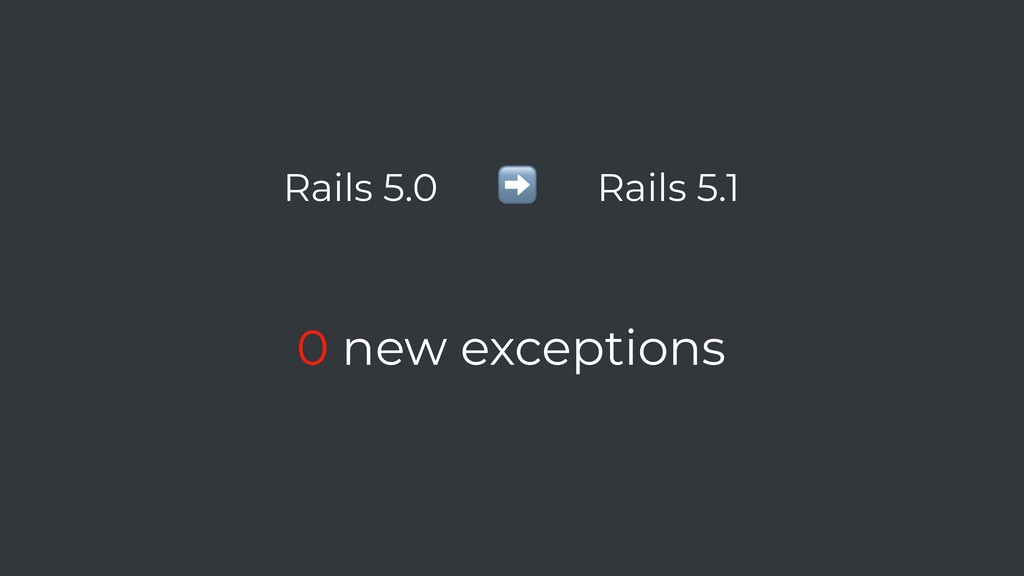

Use the following command for checking the rails version. Use the following command to make Rails executable available. Use the following command for installing Rails version 4.2.4.
Rails 5.1 new install#
Use the following command to install bundler gem. Thereafter, it is better to install the Bundler gem, because it helps to manage your application dependencies. If you don't want to install the documentation for Ruby-gems, then use the following command. Ruby provides a keyword gem for installing the supported dependencies we call them gems. Use the following command to verify the Ruby version. Use the following command for setting up the current Ruby version as default. Use the following command for installing Ruby. Tp> echo 'export PATH = "$HOME/.rbenv/plugins/ruby-build/bin:$PATH"' exec $SHELLīefore installing Ruby, determine which version of Ruby you want to install. Tp> git clone git:///sstephenson/ruby-build.git ~/.rbenv/plugins/ruby-build Tp> echo 'eval "$(rbenv init -)"' > ~/.bash_profile Tp> echo 'export PATH = "$HOME/.rbenv/bin:$PATH"' > ~/.bash_profile

Tp> git clone git:///sstephenson/rbenv.git. Use the following set of commands to get rbenv for git repository. Now we will install rbenv and set the appropriate environment variables.
Rails 5.1 new Patch#
Tp> sudo yum install -y git-core zlib zlib-devel gcc-c++ patch readline readline-devel libyaml-devel libffi-devel openssl-devel make bzip2 autoconf automake libtool bison curl sqlite-devel Use the following command for installing Rails dependencies using yum. Step 1: Install Prerequisite Dependenciesįirst of all, we have to install git - core and some ruby dependences that help to install Ruby on Rails. The rbenv provides an easy installation procedure to manage various versions of Ruby, and a solid environment for developing Ruby on Rails applications.įollow the steps given below to install Ruby on Rails using rbenv tool. It is a lightweight Ruby Version Management Tool. We are installing Ruby On Rails on Linux using rbenv. Use the following command to check the rails version.Ĭongratulations! You are now on Rails over Windows. Make sure you are connected to the internet while installing gems dependencies. Note − The above command may take some time to install all dependencies. Install Rails − With Rubygems loaded, you can install all of Rails and its dependencies using the following command through the command line − Please check the Release Notes for more detail. It's a very small package, and you'll get RubyGems as well along with this package. This is an exe file rubyinstaller-2.2.2.x.exe and will be installed in a single click.

Follow the download link, and run the resulting installer. If Ruby is not installed, then download an installation package from. If you don't get an error, skip Install Ruby step. If Ruby responds, and if it shows a version number at or above 2.2.2, then type gem -version. Open the command prompt and type ruby -v. Step 1: Check Ruby Versionįirst, check if you already have Ruby installed. Rails Installation on Windowsįollow the steps given below for installing Ruby on Rails. Let's look at the installation instructions for Rails on Windows and Linux.
Rails 5.1 new manual#
Please refer to a corresponding Database System Setup manual to set up your database. Rails works with many database systems, including MySQL, PostgreSQL, SQLite, Oracle, DB2 and SQL Server. Most websites however use Apache or lightTPD web servers in production. You can use the WEBrick Web Server, which comes with Ruby. We assume that you already have installed a Web Server and a Database System on your computer.
Rails 5.1 new software#
To develop a web application using Ruby on Rails Framework, you need to install the following software −


 0 kommentar(er)
0 kommentar(er)
